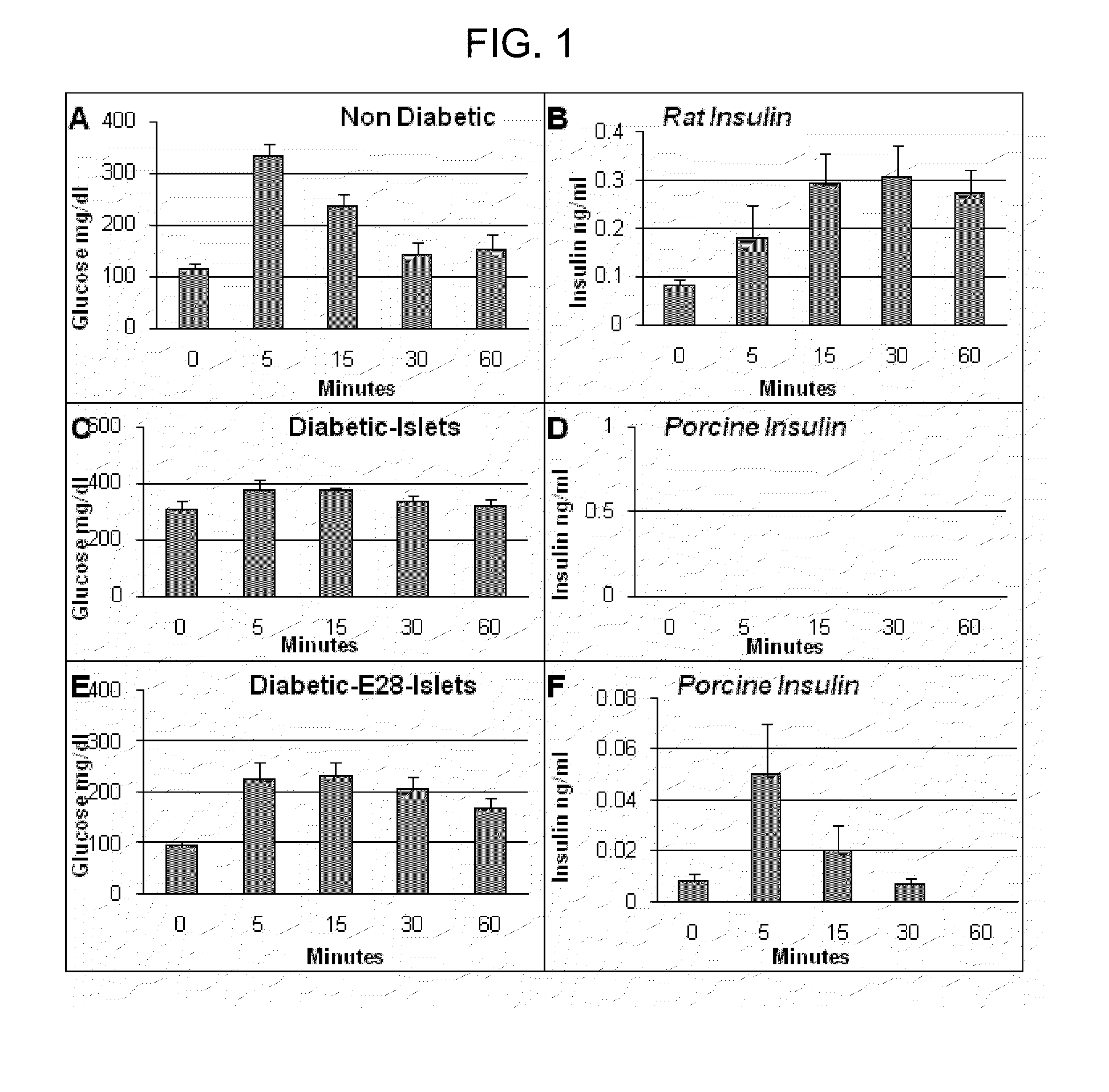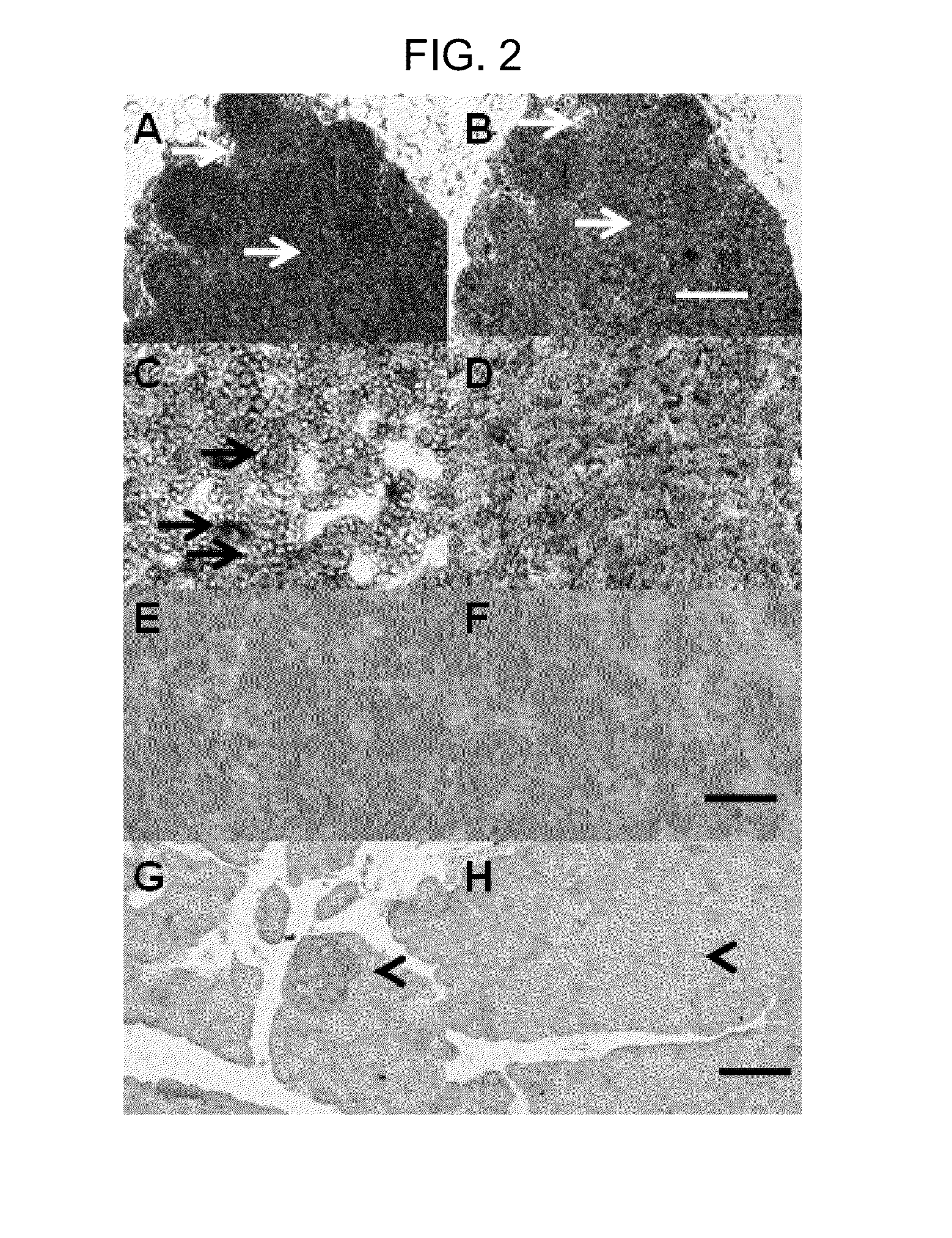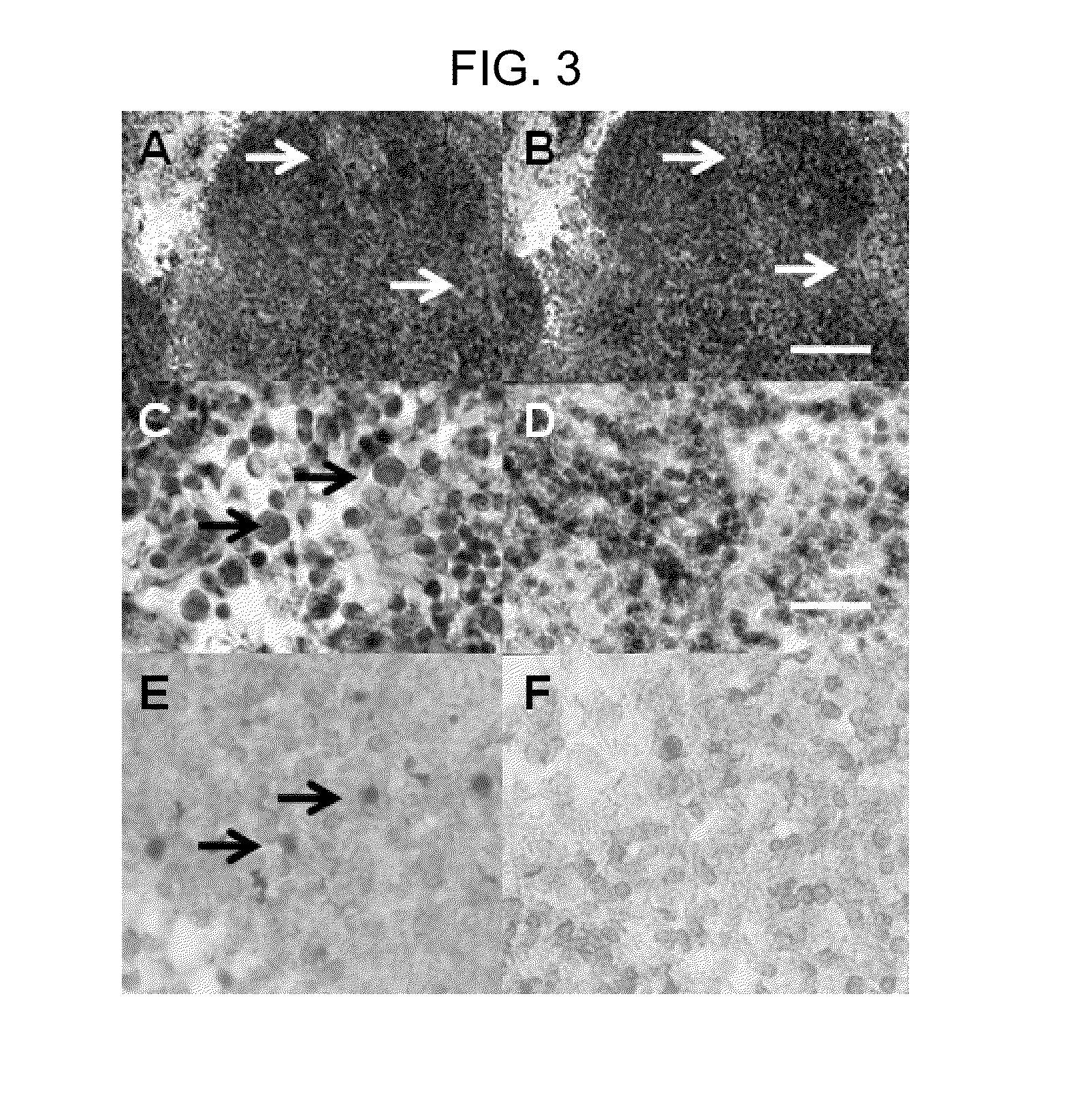Inducement of organogenetic tolerance for pancreatic xenotransplant
a pancreatic xenotransplant and organogenetic technology, applied in the direction of biocide, drug composition, metabolic disorder, etc., can solve the problems of preventing the use of pigs, limited transplantation therapy for human diabetes, and complicated outcomes
- Summary
- Abstract
- Description
- Claims
- Application Information
AI Technical Summary
Benefits of technology
Problems solved by technology
Method used
Image
Examples
example 1
Induction of Diabetes Mellitus and Treatment with Exogenous Insulin
[0100]Diabetes mellitus was induced in female LEW rats by a single i.p. injection of 40-50 mg / kg STZ. Rats were considered diabetic if fasting blood glucose levels were 300 mg / dl or above 5 consecutive days after STZ administration, at which time E28 pig pancreatic primordia were implanted. Maintenance of glucose levels <250 mg / dl during the first 2-3 weeks post-transplantation is necessary to permit optimal differentiation, proliferation, and function of transplanted E28 pig pancreatic primordia (Rogers and Hammerman 2008 Organogenesis 4, 48-51). Accordingly, rats transplanted with pig pancreatic primordia or islets were treated with 1-2 units sq b.i.d. of Lantus insulin (Sanofi-Aventis, Bridgewater, N.J.) for 2-3 weeks after implantation to maintain fasting glucose levels, measured every 3 days, at 200-250 mg / dl (Rogers and Hammerman 2008 Organogenesis 4, 48-51).
example 2
Glucose and Insulin Measurements
[0101]Levels of glucose were measured using the Hemocue B-glucose Analyzer (Hemocue, Lake Forest, Calif.) in whole blood obtained (via tail vein) at 8 AM after an overnight fast. Insulin in serum was measured using one of two enzyme-linked immunosorbent assays (ELISAs): 1) A porcine insulin-specific ELISA (catalog number K6219; DakoCytomation, Carpinteria Calif.; sensitivity 0.02 ng / ml) that does not detect rat insulin was used to generate data shown in FIGS. 1, D and F. Insulin measured using this ELISA is designated porcine insulin; or 2) an ultrasensitive ELISA (Mercodia, Winston-Salem, N.C.; NVC 10-1137-01, sensitivity 0.01 ng / ml) that detects rat insulin, but cross-reacts with porcine insulin was used to generate data from rats into which no pig tissue is present shown in FIG. 1B. Insulin measured using this ELISA is designated rat insulin. Levels of C-peptide were measured using an ELISA specific for rat (number 10-1172-01; Mercodia). Intravenou...
example 3
Histology
[0102]Tissues removed from hosts were fixed in 10% phosphate-buffered formalin (see Rogers et al. 2004 Am. J. Physiol. 286, E502-E509; Rogers et al. 2005 Transplant Immunology 14: 67-75; Rogers et al. 2006 Transplant Immunology 16, 176-184; Rogers and Hammerman 2008 Organogenesis 4, 48-51; Rogers et al. 2007 Xenotransplantation 14, 591-602). The fixative was removed, and tissues embedded in paraffin, sliced into 5 um sections and placed on glass slides in preparation for staining. Polyclonal rabbit anti-insulin serum (Accurate Chemicals, Westbury, N.Y.) was used to detect insulin in tissue sections. Nonimmune rabbit serum was substituted for control stains. 8 Sections were counterstained using hematoxylin.
PUM
| Property | Measurement | Unit |
|---|---|---|
| concentration | aaaaa | aaaaa |
| temperature | aaaaa | aaaaa |
| time | aaaaa | aaaaa |
Abstract
Description
Claims
Application Information
 Login to View More
Login to View More - R&D
- Intellectual Property
- Life Sciences
- Materials
- Tech Scout
- Unparalleled Data Quality
- Higher Quality Content
- 60% Fewer Hallucinations
Browse by: Latest US Patents, China's latest patents, Technical Efficacy Thesaurus, Application Domain, Technology Topic, Popular Technical Reports.
© 2025 PatSnap. All rights reserved.Legal|Privacy policy|Modern Slavery Act Transparency Statement|Sitemap|About US| Contact US: help@patsnap.com



